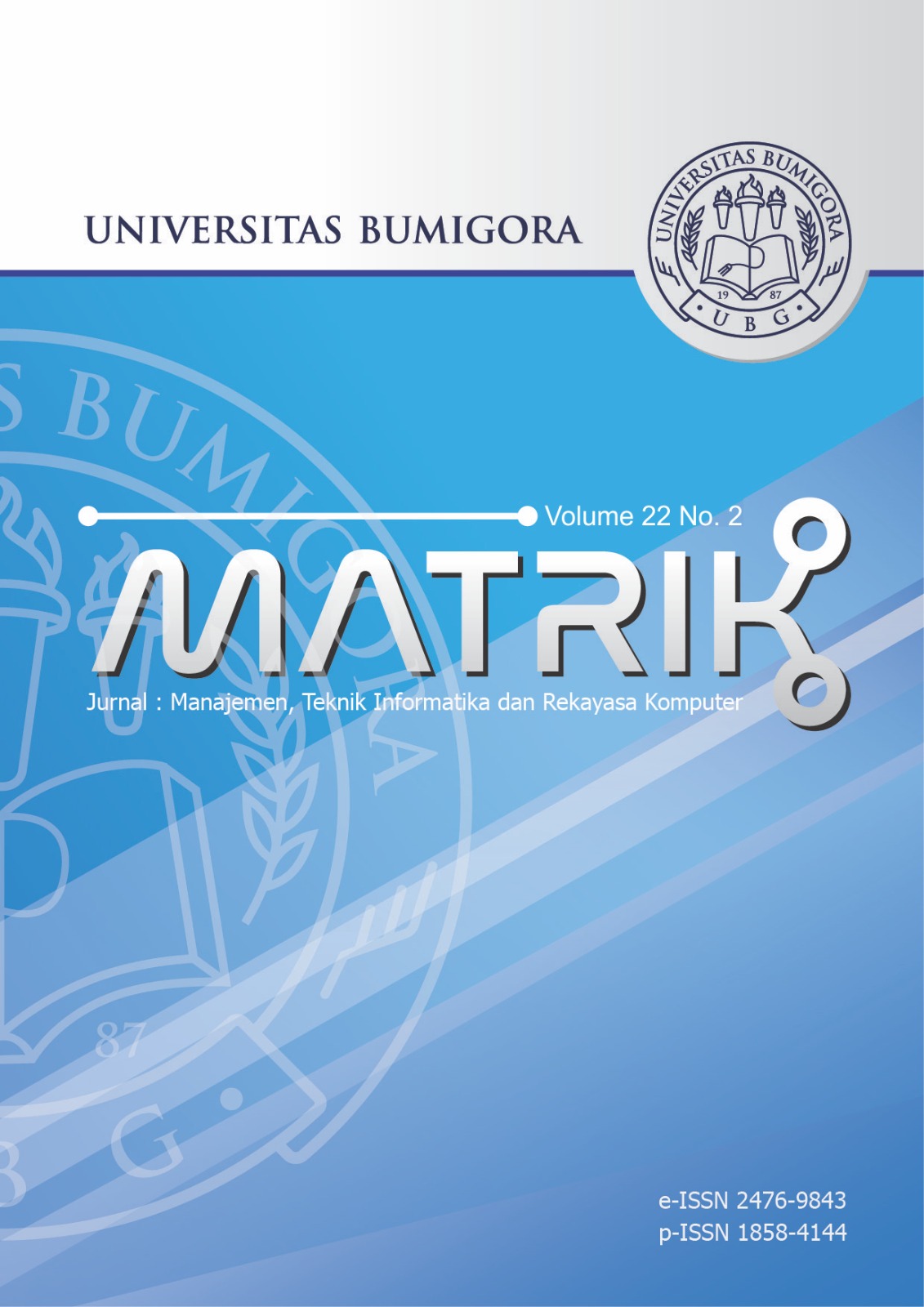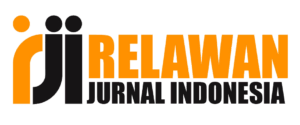The Application of Usability Testing to Analyze the Quality of Android-Based Acupressure Smart Chair Applications
Abstract
A smart chair is a reflection smart chair that utilizes waste tires as an alternative to acupuncture. Smart chairs are designed for people who are phobic about acupuncture needles by replacing these needles with waste tires. Acupuncture smart chairs also make it easier for users without having to go to the acupuncture practice place. This smart chair is equipped with an application that is directly connected to android. The smart chair application is an android-based remote control where users can control the application remotely. However, this application has not been tested so it is not yet known how effective and efficient the use of the application is. Therefore, researchers would conduct testing by using the usability testing method. The usability testing method is a method carried out to measure the ease of the application that has been made. The analysis in this method used five evaluation components, namely learnability, efficiency, memorability, errors, and satisfaction. This research would make instruments based on usability testing and then distribute instruments to samples by using sampling techniques. The results of this study showed a variable learnability value was 65% while the efficiency variable got a value of 74%. In terms of memorability, its value was 59%, then the Errors variable value was 74%, and the last variable, namely satisfaction, reached a value of 74%.
Downloads
References
[2] M. B. Tri, “Perancangan Sistem Informasi Management Siswa Berprestasi Berbasis Android Pada Smk Pgri Rawalumbu,” J. Sains Teknol. Fak. Tek., vol. X, no. 2, pp. 30–39, 2020.
[3] K. R. Hadi, H. M. Az-Zahra, and L. Fanani, “Analisis Dan Perbaikan Usability Aplikasi Mobile KAI Access Dengan Metode Usability Testing Dan Use Questionnaire,” J. Pengemb. Teknlogi Inf. dan Ilmu Komput., vol. 2, no. 9, pp. 2742–2750, 2018.
[4] A. A. Jiwa Permana, “Usability Testing Pada Website E-Commerce Menggunakan Metode System Usability Scale (Sus) (Studi Kasus : Umkmbuleleng.Com),” JST (Jurnal Sains dan Teknol., vol. 8, no. 2, p. 149, 2019, doi: 10.23887/jst-undiksha.v8i2.22858.
[5] M. I. Farouqi, I. Aknuranda, and A. D. Herlambang, “Evaluasi Usability pada Aplikasi Go-Jek Dengan Menggunakan Metode Pengujian Usability,” J. Pengemb. Teknol. Inf. dan Ilmu Komput., vol. 2, no. 10, pp. 3150–3156, 2018.
[6] A. Hidayati, E. Oktariza, F. Rosmaningsih, and S. A. Lathifah, “Analisa Kualitas Perangkat Lunak Sistem Informasi Akademik Menggunakan McCall,” Multinetics, vol. 3, no. 1, p. 48, 2017, doi: 10.32722/vol3.no1.2017.pp48-53.
[7] S. Gunawan, “Analisis Kualitas Layanan Pengguna Website E- Learning Dengan Metode Servqual (Studi Kasus Spada Dikti Program Kampus Merdeka),” in MDP Student Conference (MDP-SC), 2022, vol. 1, pp. 526–537.
[8] S. Erlinda, M. K. Anam, T. Nasution, Ambiyar, and D. Irfan, “Analisis Tingkat Objektifitas Pengisian Edom Untuk Meningkatkan Kualitas Pembelajaran Dosen,” JURTEKSI (Jurnal Teknol. dan Sist. Informasi), vol. VII, no. 1, pp. 105–114, 2020, doi: https://doi.org/10.33330/jurteksi.v7i1.881.
[9] H. Firdaus and A. Zakiah, “Implementation of usability testing methods to measure the usability aspect of management information system mobile application (Case study sukamiskin correctional institution),” Int. J. Mod. Educ. Comput. Sci., vol. 13, no. 5, pp. 58–67, 2021, doi: 10.5815/ijmecs.2021.05.06.
[10] R. H. Wirasasmiata and M. Z. Uska, “Evaluation of E-Rapor Usability using Usability Testing Method,” in International Conference on Educational Research and Innovation, 2019, vol. 330, pp. 71–74, doi: 10.2991/iceri-18.2019.15.
[11] I. G. W. Darma, K. S. Utami, and M. Sudarma, “User Experience Analysis on SSO Portal,” Int. J. Eng. Emerg. Technol., vol. 3, no. 2, pp. 92–96, 2018.
[12] W. Hidayat, A. Y. Ranius, and U. Ependi, “Penerapan Metode Usability Testing Pada Evaluasi Situs Web Pemerintahan Kota Prabumulih,” J. Tek. Inform., pp. 1–12, 2014.
[13] N. Luh Putri Ari Wedayanti, N. Kadek Ayu Wirdiani, and I. Ketut Adi Purnawan, “Evaluasi Aspek Usability pada Aplikasi Simalu Menggunakan Metode Usability Testing,” J. Ilm. Merpati (Menara Penelit. Akad. Teknol. Informasi), vol. 7, no. 2, p. 113, 2019, doi: 10.24843/jim.2019.v07.i02.p03.
[14] F. Fauseh, “Penerapan Metode Usability Testing Pada Website Gedung Pontianak Convention Center (PCC) Online,” Digit. Intell., vol. 1, no. 1, pp. 27–35, 2020, doi: 10.29406/diligent.v1i1.2332.
[15] M. K. Anam, M. Fuad, H. Yenni, S. E. Fatda, H. Asnal, and H. Hamdani, “Application of usability testing for analyzing the quality of ‘Keluarga’ pharmacy system in Pekanbaru,” Ilk. J. Ilm., vol. 13, no. 3, 2021, [Online]. Available: http://jurnal.fikom.umi.ac.id/index.php/ILKOM/article/view/870.
[16] M. K. Anam, A. R. Putra, S. Fadli, M. B. Firdaus, F. Suandi, and Lathifah, “Audit Teknologi Informasi Pada Sistem Pekreditan Online Terpadu Bank XYZ Cabang Perawang Menggunakan ITIL V3,” MISI (Jurnal Manaj. Inform. dan Sist. Informasi), vol. 3, no. 2, pp. 90–99, 2020.
[17] M. Susanti, M. K. Anam, Susanti, and H. Asnal, “Analisa dan Perancangan E-Meeting Desa Sebagai Media Partisipasi Masyarakat Di Masa Pandemi Analysis and Design of Village E-Meetings as a Media for Community Participation in the Pandemic Period,” VOI (Voice Informatics), vol. 10, no. 2, pp. 77–84, 2019, [Online]. Available: https://voi.stmik-tasikmalaya.ac.id/index.php/voi/article/view/240.
[18] M. K. Anam and H. Ulayya, “Implementasi dan Analisa SARDrive Sebagai Media Penyimpanan Cloud,” JUITA J. Inform., vol. 8, no. 1, pp. 83–90, 2020, doi: 10.30595/juita.v8i1.5748.

This work is licensed under a Creative Commons Attribution-ShareAlike 4.0 International License.


.png)














